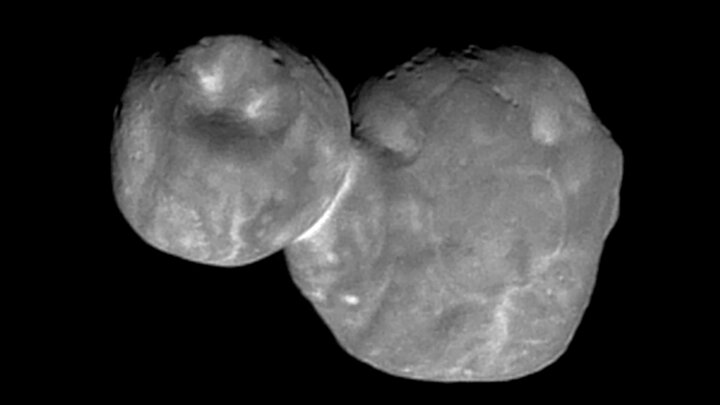Science & Technology
Evidence of Water Found at Ultima Thule
- 20 May 2019
- 2 min read
NASA has found evidence for a unique mixture of methanol, water, ice and organic molecules on Ultima Thule's surface
- NASA has published the first profile of Ultima Thule, an ancient relic from the era of planet formation revealing details about the complex space object.
- Researchers are investigating a range of surface features on Ultima Thule, such as bright spots and patches, hills and troughs, and craters and pits on it.
- The largest depression is a 8-kilometer-wide, the team has nicknamed Maryland crater, likely formed from an impact.
- Colour and composition: of Ultima Thule resembles many other objects found in its area of the Kuiper Belt. Its reddish hue is believed to be caused by modification of the organic materials on its surface.
About Ultima Thule
- NASA’s New Horizons spacecraft flew past the icy object nicknamed Ultima Thule (TOO-lee) in Kuiper belt.
- It is a contact binary, with two distinctly differently shaped lobes. It consists of a large, strangely flat lobe nicknamed "Ultima" connected to a smaller, somewhat rounder lobe dubbed "Thule" at a juncture.
- The lobes likely once orbited each other until some process brought them together in what scientists have shown to be a "gentle" merger.
- The alignment of the axes of Ultima and Thule indicates that before the merger the two lobes must have become tidally locked, meaning that the same sides always faced each other as they orbited around the same point.
The discoveries made about Ultima Thule are going to advance theories of solar system formation.






